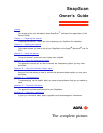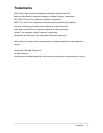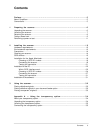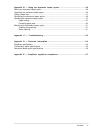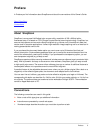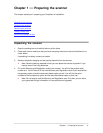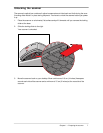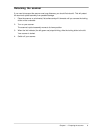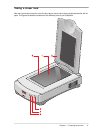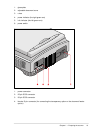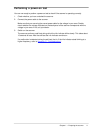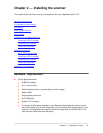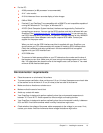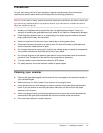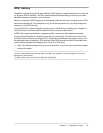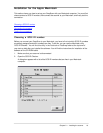
Preface 5
Preface
In Preface you find information about SnapScan and about the conventions of this Owner's Guide.
About SnapScan
Conventions
About SnapScan
SnapScan is a one pass 8-bit flatbed color scanner with a resolution of 300 x 600 dpi with a
fluorescent lamp. It is based on CCD (Charge Coupled Device) scanning technology. SnapScan is a
scanner that captures and converts reflective originals (e.g. pictures, text) into electronic data that
can be used in computer applications. It offers high-resolution image capturing and is an ideal tool in
making presentations come to life.
If you purchased the document feeder option you can to scan up to 60 sheets of text fast and
without interruption. Some software packages allow you to convert the scanned sheets of text into
most of the commercially used text file formats. If you purchased the transparency option, you can
scan transparent originals (e.g. slides) as well.
SnapScan supports multiple scanning modes and includes scanner software to get you started right
away. With its powerful and easy-to-use scanner driver software, SnapScan gives you easy access
to high-quality color scans. The scanner driver software gives you a number of additional features to
create special effects or to reproduce even the most difficult originals.
A practical feature is the adjustable document cover: when you put a thicker original (like a book or a
magazine) on the reflective glass plate, the document cover adapts itself to its thickness.
You can scan line-art, halftone, gray-scale and color reflective originals up to legal or A4 format. The
corresponding bit depths can be either 3 x 8 bit for color, 8 bit for gray-scale originals, or 1 bit for line-
art originals. The scanned data are transferred to the workstation through SCSI-2. The workstation
can be an Apple Macintosh or PC.
Conventions
The following conventions are used in this guide:
❖ Note: a note of this type gives you additional information.
■ Instructions are preceded by a small red square.
1. Numbered steps describe the actions you must take to perform a task.



